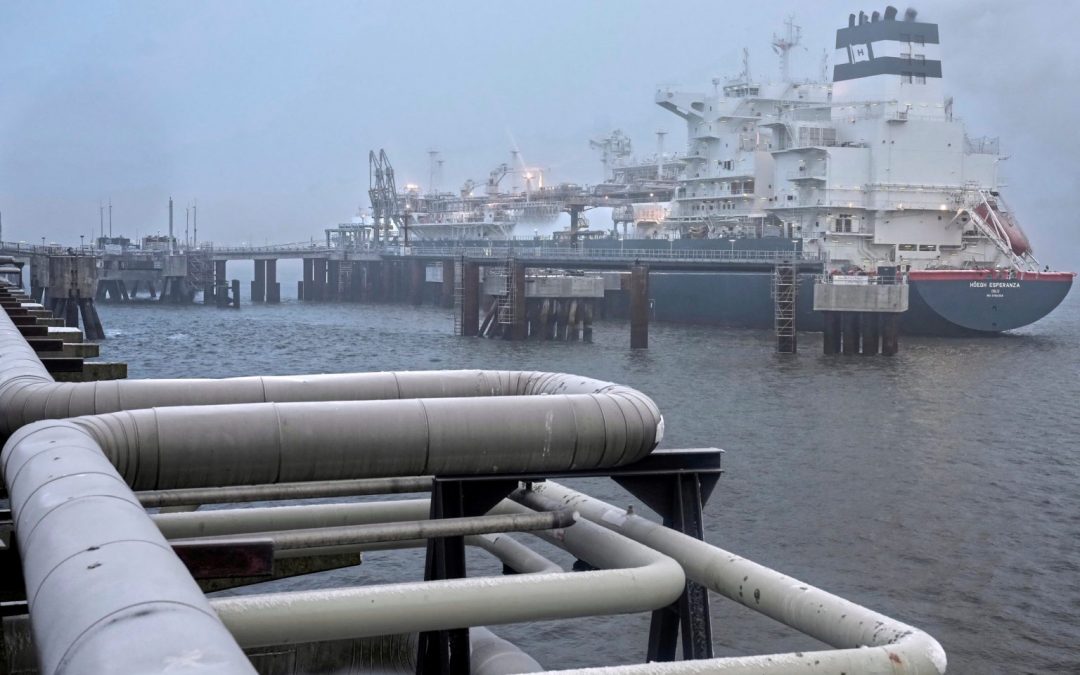LNG cargoes floating near the shores of Europe have begun to unload in November, as natural gas storages in the EU begin to see net withdrawals, sources said.
Charterers looking to wait for higher prices can choose to float their LNG cargoes when the price of maintaining offshore storage is more advantageous than selling it at that point in time or sending the vessel to another market like the Pacific Basin.
Total volumes on the water globally were estimated at around 27 Bcm at the start of November, a decline of roughly 1.4 Bcm from October as volumes started to net offload at the start of winter, according to S&P Global Commodity Insights data. US-origin LNG is the largest driver of the year-on-year increase in floating volumes, with nearly 9 Bcm of LNG from the US estimated on the water in November, a 1.1 Bcm increase over last year.
The unloading comes as Europe begins to see net withdrawals from natural gas storages for the first time in seven months. EU gas in storage was down 0.02% on the day to 99.61% full on Nov. 7, according to Aggregated Gas Storage Inventory data. Prior to that, the EU last saw a withdrawal on April 6, falling 0.08% to 55.54%. Withdrawals have continued in November, with capacity falling 0.15% between Nov. 7 and Nov. 10.
Storages sat at 99.49% full as of Nov. 12, AGSI data showed.
With inland natural gas storage beginning to decrease, room is being made for floating volumes to be regasified and placed into storage.
An Atlantic-based trader attributed the unwinding of floating storage into European markets to the rise of nearly a dollar in NWE LNG prices on Nov. 9.
“[The] jump in prices triggered companies to get rid of volumes as they expect prices to go down again,” the trader said.
The Platts DES Northwest Europe Marker for December was assessed at $14.565/MMBtu Nov. 9, a gain of 94.3 cents on the day. The market has since softened with Platts, part of S&P Global Commodity Insights, assessing December NWE at $14.076/MMBtu on Nov. 14.
Likewise, as more LNG is offloaded in Europe, this has widened Northwest European LNG’s discount to the Dutch TTF natural gas hub price due to “too much LNG at terminals,” another trader said.
NWE has also reached its widest discount to the Dutch TTF in nine weeks. December NWE was assessed at a $1.10/MMBtu discount to TTF on Nov. 14, the widest the discount has been since Sept. 19, when Platts assessed NWE at a $1.15/MMBtu discount to the natural gas hub.
With more tonnage becoming available as floating cargoes offload, the first trader said the delivery of more cargoes into Europe could help ease the current shipping shortage the market is experiencing as voyages to Asia are taking longer to complete. This situation, however, is unlikely to have immediate effects, the trader said.
The trader attributes the existing shipping shortage primarily to the closure of the Northern/Arctic route, along with a surge in tenders and demand from Asia. Additionally, congestion at the Panama Canal resulting from drought-mitigation measures further compounds the situation, according to the trader.
“Floating storage has started to unwind, but the available tonnage is still pretty tight,” S&P Global Commodity Insights LNG Trade & Shipping Analyst Andres Rojas said.
Rojas added that he thought the current tight tonnage was due to “fewer relets being offered into the market [as] traders want to hold on to any available tonnage during the volatile winter trading months.”
Source: Hellenic Shipping News





